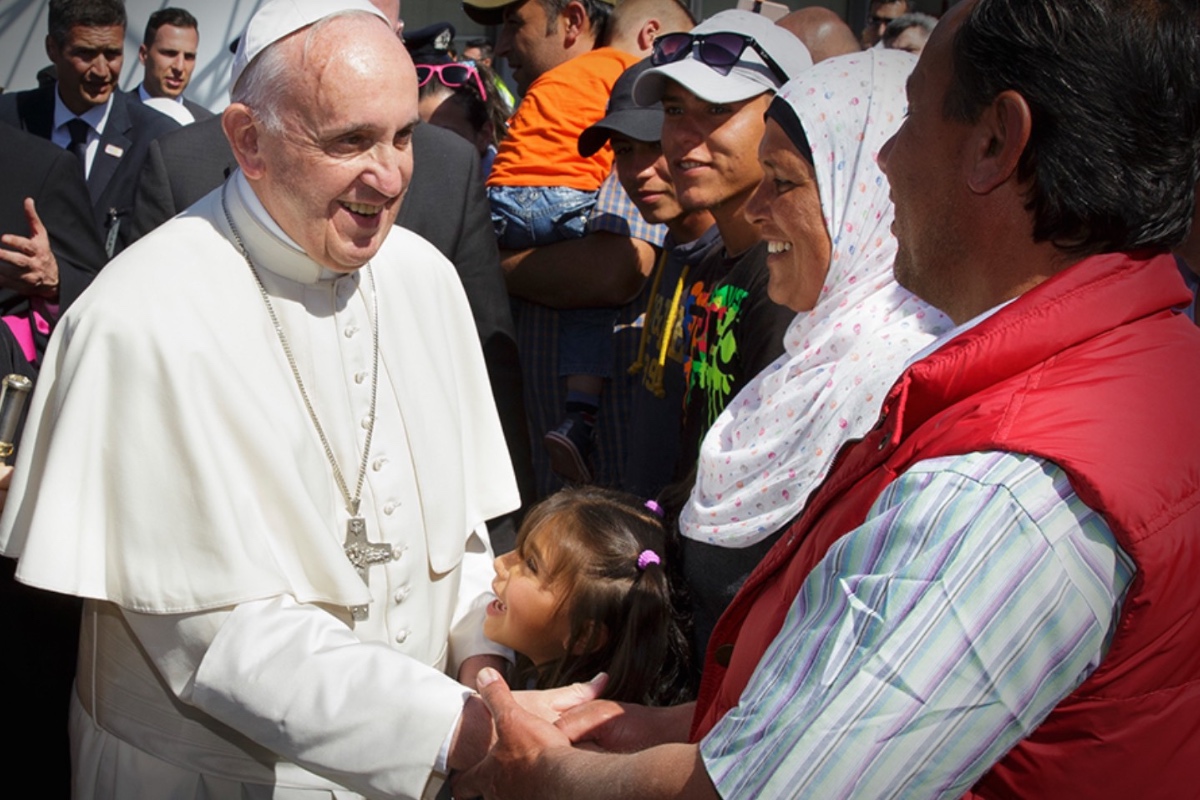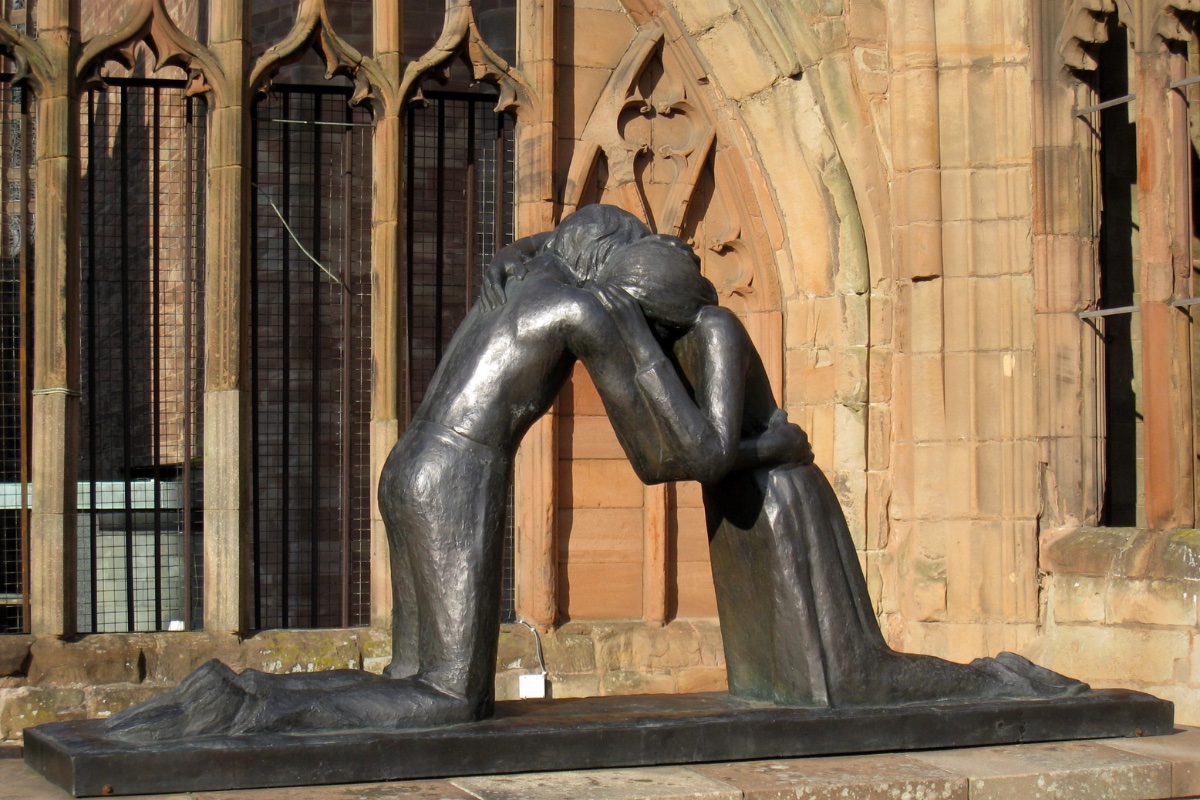The Church has yet to fully heal the wounds of clergy sexual abuse and its coverup. The Final Document of the Synod states: “The need within the Church for healing, reconciliation and the rebuilding of trust has resounded at every stage of the synodal process, particularly in lightof so many scandals related to different types of abuse.”1 The bishops write, “The Church needs to listen with special attention and sensitivity to the voices of victims and survivors of sexual, spiritual, economic, power and conscience abuse by members of the clergy or persons with Church appointments. Listening is a fundamental element of the path to healing, repentance, justice and reconciliation.”2 Synodal documents from the United States reveal that the U.S. Church must still address, especially, the enduring wounds of clergy sexual abuse and its coverup: “The sin and crime of sexual abuse has eroded not only trust in the hierarchy and the moral integrity of the Church, but also created a culture of fear that keeps people from entering into relationship with one another and thus from experiencing the sense of belonging and connectedness for which they yearn.”3
But what does healing around this look like and is reconciliation for such a tragedy possible? Joshua Snyder defines reconciliation in the Christian view: “the reestablishment of right relationship with God, oneself, and one’s neighbor requires the triple dimension of truth, justice and forgiveness.”4 Following this, reconciliation after the deep wounds of clergy abuse and its coverup requires that the Church commit to restoring right relationships with victim/survivors and their families and the whole Church by creating structures for unearthing the truth and upholding justice in order to create pathways for those who desire to walk toward forgiveness and reconciliation.
Since 2002, when the Boston Globe’s Spotlight Team exposed the clergy abuse crisis and its coverup in Boston, we have continued to learn of the extent of this tragedy in the United States and around the world.5 The USCCB responded in 2002 by introducing what became known as the “Dallas Charter,” which set up safeguarding protections and guidelines for how to respond to allegations and initiated the John Jay College of Criminal Justice to provide a nationwide investigation, which was released in 2004.6 But the U.S. Church has continued to be unmoored by additional waves of allegations, including the 2017 revelation of abuses done by Cardinal Theodore Edgar McCarrick and the 2018 Pennsylvania Grand Jury Report that documents over one thousand cases of abuse.7 And there is growing awareness of how abuse within Native, Latino, and Black communities has yet to be fully acknowledged and reckoned with.8 Abuse is not unique to the U.S.; investigations and revelations have occurred across the globe.9
The pain of victim/survivors is unfathomable, and the effects of abuse can manifest on the mental, physical, emotional, and spiritual levels, including what Brian Clites describes as “soul murder,” and what Thomas Doyle describes as “spiritual trauma.”10
Repair efforts have been ongoing in the U.S. and around the world. The USCCB’s National Review Board actively works to prevent sexual abuse on a national level and diocesan and religious review boards exist throughout the country. Monetary settlements have been common globally, while holistic approaches have varied from restorative justice healing circles supported by bishops to various lay-led support groups.11 And there have been numerous papal apologies.12
The pain of victim/survivors is unfathomable, and the effects of abuse can manifest on the mental, physical, emotional, and spiritual levels, including what Brian Clites describes as “soul murder,” and what Thomas Doyle describes as “spiritual trauma.”
Yet, more must be done in the U.S. and around the world to heal these wounds. The recent “Annual Report” of the Pontifical Commission for the Protection of Minors includes testimonies from victim/survivors from the Americas revealing the healing work that lays ahead for the Church. Survivors express the need for transparent and empathetic responses from the Church: “We are very specific when we show our wounds, but the Church’s response is not concrete; it is cold, vague or none at all.” And survivors explain how the Church herself must heal: “If to us as victims the Church does not take care of us, and to our families even less, how can those domestic Churches be recovered, if it is the same Church that closed the doors to them?” The report describes two phases for reckoning with abuse: safeguarding and healing. They explain that “[b]oth transitions require practices of truth-telling, justice, reparations, and guarantees of nonrecurrence through personal and institutional reform,” and to do this they have adopted “the framework of conversional justice” rooted in those concepts as understood theologically. As the report powerfully proclaims, healing requires caring for victim/survivors and addressing the impact this has had on the whole Church.13
As the Church reflects on how to implement these commitments, I propose that Clergy Abuse Truth and Reconciliation Commissions (TRCs) are one way to embody the pillars while centering the needs of victim/survivors and inviting the People of God to stand in solidarity with them.14 Truth and Reconciliation Commissions are political tools that have been used in conflict areas as a way forward after war and strife.15 They are generally commissioned for a specific period of time to address particular harms and to produce a report of their learnings with recommendations for further healing and institutional changes. At their core, TRCs make space for truth-telling and use testimonies as the foundation for reconciliation and justice. The most well-known TRC is probably South Africa’s, which was commissioned in 1995 and led by Archbishop Desmond Tutu to address the human rights violation of apartheid.16 While South Africa’s TRC offered amnesty in exchange for truth-telling, this is not a universal requirement of TRCs.
A global model for Clergy Abuse TRCs could be developed by the episcopacy in conversation with survivors and a variety of experts, including mental health professionals, trauma experts, restorative justice specialists, theologians, and canon lawyers. Dioceses (or parishes) could then implement the TRC model while adapting it to their cultural context and following the needs of survivors in their communities. This would create the conditions for thepossibility of reconciliation for those who desire it, wherein the Church takes visible and concrete steps toward accountability and justice, but forgiveness and reconciliation would not be forced.
The TRC model provides a mechanism to promote reconciliation—the restoration of right relationship—through a process founded on the healing commitments championed by Synod and the Pontifical Commission, most importantly truth-telling. Testimonies of victim/survivors would be the central fixture of Clergy Abuse TRCs. These could be honored through public testimonials or in private, according to the needs and desires of victim/survivors and their families. Liturgical practices could be used to invite the diocese to stand in solidarity with survivors by bearing witness to, and lamenting, survivor stories. The perpetrators (or representatives of the Church) could offer apologies in ways that feel fitting for the victim/survivors. Each Clergy Abuse TRC could determine appropriate reparations that support the physical, psychological, and spiritualneeds of survivors with attention on how to involve the local community. Like political TRCs, Clergy Abuse TRCs would write reports and make suggestions for changes. The Church could synthesize reports from around the world to identify persistent issues and offer recommendations for structural changes.
The visible and transparent processes of Clergy Abuse TRCs implemented in dioceses around the world would raise the voices of victim/survivors and allow the People of God to lament in solidarity with them. This manifestation of truth, justice, and accountability could pave a path to healing and reconciliation.17
Kate Jackson-Meyer is a researcher at Harvard University in the Human Flourishing Program. Her current research focuses on well-being and the possibilities and limits of forgiveness. She is a trained mediator and volunteers in local courts.
Photo credit: Adobe Stock/kyrien. The Camargue Cross, designed in 1926 by painterHermann-Paul, symbolizes the three theological virtuesof faith (cross), hope (anchor), and charity (heart).
Sources:
- XVI Ordinary General Assembly of the Synod of Bishops, “Final Document,” October 25, 2024, 46, https://www.synod.va/content/dam/synod/news/2024-10-26_final-document/ENG---Documento-finale.pdf.
- Final Document, 55.
- United States Conference of Catholic Bishops, “National Synthesis of the People of God in the United States of America for the Diocesan Phase of the 2021-2023 Synod,” September 19, 2022, 5, https://www.usccb.org/resources/US%20National%20Synthesis%202021-2023%20Synod.pdf.
- Joshua R. Snyder, “Should Transitional Justice Promote Forgiveness? Insights from Guatemala’s Recovery of Historical Memory Project,” Journal for Peace & Justice Studies 29, no. 1 (2019): 7.
- Spotlight Team, “Church Allowed Abuse by Priest for Years,” The Boston Globe, January 6, 2002, www.bostonglobe.com/news/special-reports/2002/01/06/church-allowed-abuse-priest-for-years/cSHfGkTIrAT25qKGvBuDNM/story.html.
- United States Conference of Catholic Bishops, “Charter for the Protection of Children and Young People,” 1st ed, June 2002 (note this was revised in 2005, 2011, and 2018); and John Jay College of Criminal Justice, “The Nature and Scope of Sexual Abuse of Minors by Catholic Priests and Deacons in the United States, 1950-2002,” February 2004, www.loc.gov/item/2019667266/.
- Secretariate of State of the Holy See, “Report on the Holy See’s Institutional Knowledge and Decision-Making Related to Former Cardinal Theodore Edgar McCarrick (1920-2017),” November 10, 2020, www.vatican.va/resources/resources_rapporto-card-mccarrick_20201110_en.pdf; Office of the Attorney General Commonwealth of Pennsylvania, “Report I of the 40th Statewide Investigating Grand Jury,” July 27, 2018.
- Neglected Voices in the Clergy Sexual Abuse Crisis,” roundtable, Georgetown University Initiative on Catholic Social Thought and Public Life, October 5, 2022, https://catholicsocialthought.georgetown.edu/events/neglected-voices-in-the-clergy-sexual-abuse-crisis.
- For instance, the report from France made global headline, see Independent Commission on Sexual Abuse in the Catholic Church (CIASE), “Sexual Violence in the Catholic Church France 1950-2020: Summary of the Final Report,” October 5, 2021, www.ciase.fr/medias/Ciase-Summary-of-the-Final-Report-5-october-2021.pdf. For more on the situation worldwide, see James Keenan, “Hierarchicalism,” Theological Studies 83, no. 1 (2022): 86–89.
- Brian J. Clites, “Soul Murder: Sketches of Survivor Imaginaries,” Exchange 48, no. 3 (2019): 273; Thomas P. Doyle, “The Spiritual Trauma Experienced by Victims of Sexual Abuse by Catholic Clergy,” Pastoral Psychology 58, no. 3 (June 2009): 250.
- For a look at international reparations see, James Gallen, “Jesus Wept: The Roman Catholic Church, Child Sexual Abuse and Transitional Justice,” International Journal of Transitional Justice 10 (2016): 346-347; for an example of restorative justice healing circle in the US, see The Healing Circle, documentary, Marquette University Law School, 2009, https://www.youtube.com/watch?v=zX8fBdmnOH8&list=PLTSgLrEhQXSTLT_eGIQzPST8b9kuEm09M; there are many lay led survivor groups, for an example of one see Awake, https://www.awakecommunity.org/.
- For an example of a papal response, see Pope Francis, “Letter of His Holiness Pope Francis to the People of God,” August 20, 2018, www.press.vatican.va/content/salastampa/it/bollettino/pubblico/2018/08/20/0578/01246.html#ted.
- Tutela Minorum Pontifical Commission for the Protection of Minors, “2023-2024 Annual Report on Church Policies and Procedures for Safeguarding,” October 2024, 21, 21, 15, 4, https://www.tutelaminorum.org/wp-content/uploads/2024/10/English-AR-Digital-Version-2024-1.pdf.pagespeed.ce.CQaxFo87EK.pdf.
- For a more in-depth look into this, see Kate Jackson-Meyer, “A Clergy Abuse Truth Reconciliation Commission,” in Responding to the Sexual Abuse Crisis in the Catholic Church: Perspectives from Theology and Theological Ethics, edited by Daniel J. Fleming, James F. Keenan, Hans Zollner (Eugene, Oregon: Wipf and Stock, 2023): 230-246, https://jmt.scholasticahq.com/article/72067-a-clergy-abuse-truth-and-reconciliation-commission. To see some early, initial suggestions on the relationship between TRCs and clergy abuse, see Brian Roewe, “Haselberger: South Africa’s Post-Apartheid Commission a Way Forward for Church on Accountability,” National Catholic Reporter, August 7, 2014, www.ncronline.org/news/accountability/haselberger-south-africas-post-apartheid-commission-way-forward-church; Inés San Martín, “Scholars Seek to Establish ‘Truth and Reconciliation’ Structures for Clerical Abuse,” Crux, July 28, 2020, www.cruxnow.com/church-in-the-usa/2020/07/scholars-seek-to-establish-truth-and-reconciliation-structures-for-clerical-abuse/; Heal Our Church, “Mission and Vision,” www.healourchurch.org/mission-and-vision.
- For more on TRCs, see Priscilla B. Hayner, Unspeakable Truths: Confronting State Terror and Atrocity (New York: Routledge, 2001).
- Desmond Tutu, No Future without Forgiveness (New York: Doubleday, 2009).
- This article is adapted from Kate Jackson-Meyer, “A Clergy Abuse Truth Reconciliation Commission.”



.png)


